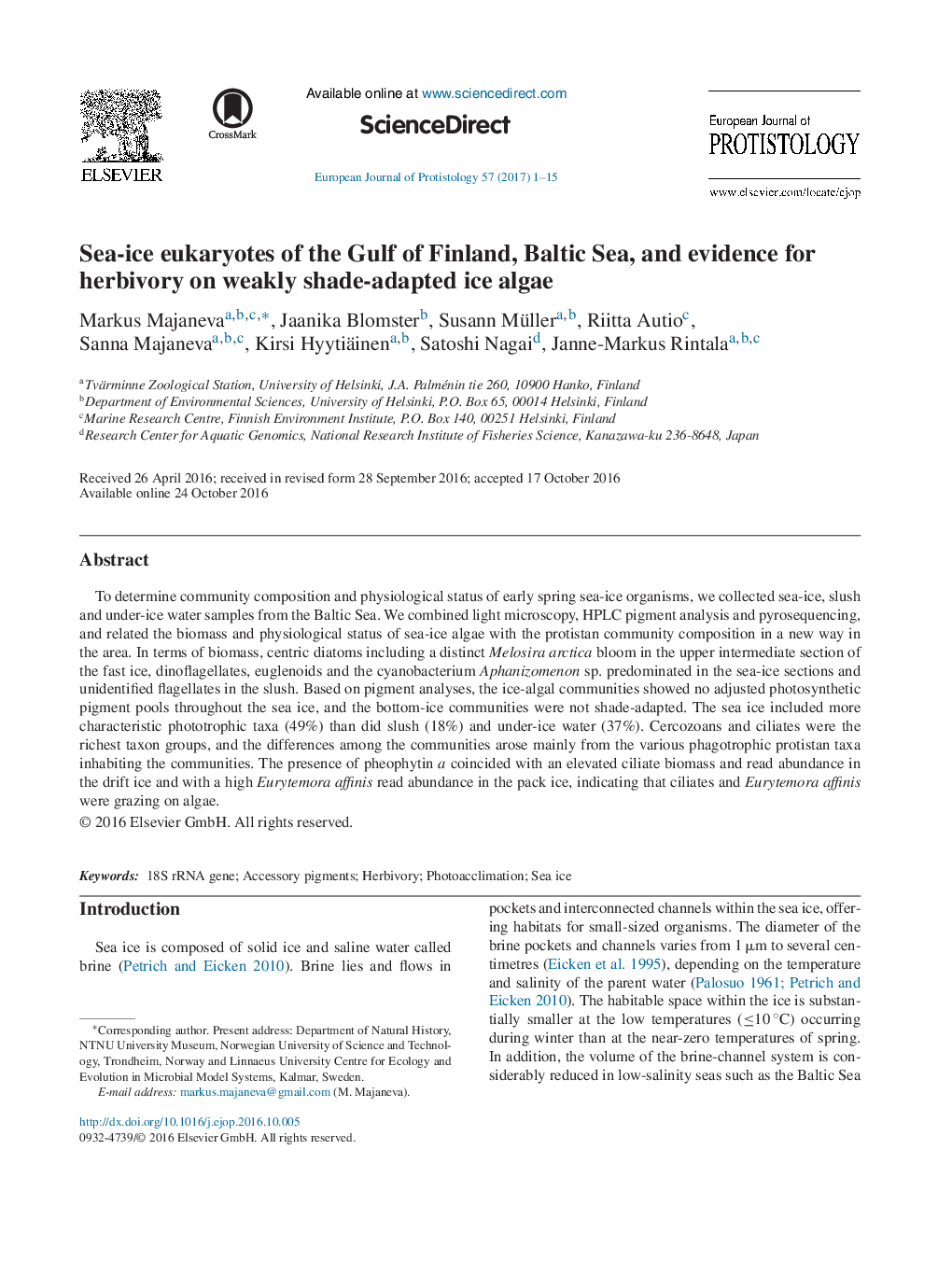| کد مقاله | کد نشریه | سال انتشار | مقاله انگلیسی | نسخه تمام متن |
|---|---|---|---|---|
| 5517573 | 1543278 | 2017 | 15 صفحه PDF | دانلود رایگان |
To determine community composition and physiological status of early spring sea-ice organisms, we collected sea-ice, slush and under-ice water samples from the Baltic Sea. We combined light microscopy, HPLC pigment analysis and pyrosequencing, and related the biomass and physiological status of sea-ice algae with the protistan community composition in a new way in the area. In terms of biomass, centric diatoms including a distinct Melosira arctica bloom in the upper intermediate section of the fast ice, dinoflagellates, euglenoids and the cyanobacterium Aphanizomenon sp. predominated in the sea-ice sections and unidentified flagellates in the slush. Based on pigment analyses, the ice-algal communities showed no adjusted photosynthetic pigment pools throughout the sea ice, and the bottom-ice communities were not shade-adapted. The sea ice included more characteristic phototrophic taxa (49%) than did slush (18%) and under-ice water (37%). Cercozoans and ciliates were the richest taxon groups, and the differences among the communities arose mainly from the various phagotrophic protistan taxa inhabiting the communities. The presence of pheophytin a coincided with an elevated ciliate biomass and read abundance in the drift ice and with a high Eurytemora affinis read abundance in the pack ice, indicating that ciliates and Eurytemora affinis were grazing on algae.
Journal: European Journal of Protistology - Volume 57, February 2017, Pages 1-15
